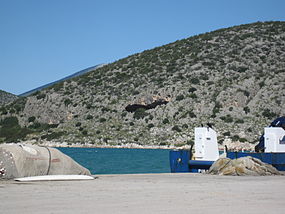If you’re interested in learning more about the Mesolithic,
check out the sources listed below. I’ve
used a lot of them in this blog.
The Mesolithic in general:
The
Lost Civilizations of the Stone Age by Richard Rudgley,
1999, is a very good book. While it
doesn’t cover diet very well, it provides a good overview of technological
developments during all of the Stone Ages: http://www.amazon.com/The-Lost-Civilizations-Stone-Age/dp/0684862700
Microburin’s blog at http://microburin.com/
Check out what the Smithsonian National Museum of
Natural History has: http://humanorigins.si.edu/evidence/behavior/food
For more information about Tybrind Vig in
particular, look here:
Kubiak-Marten’s fascinating article on the plant
remains found: http://www.jstor.org/stable/23417650
An article by Torben Malm about the excavations at
Tybrind Vig: http://www.abc.se/~pa/publ/tybrind.htm
And here’s what Wikipedia has to say about the
Ertebølle Culture: http://en.wikipedia.org/wiki/Erteb%C3%B8lle_culture
For Franchthi cave, look here:
Dartmouth has a very informative page: http://www.dartmouth.edu/~prehistory/aegean/?page_id=107
Wikipedia: http://en.wikipedia.org/wiki/Franchthi_Cave
Archaeology.about.com has some basic information
about the excavations: http://archaeology.about.com/od/archa13/a/franchthi.htm
Mathilda’s Anthropology Blog provides a good, in
depth summary of artifacts and remains found at the site during all periods of
its occupation: http://mathildasanthropologyblog.wordpress.com/2008/07/02/inhabited-for-17000-years-franchthi-cave-greece/
Unfortunately, there’s not a lot of information
about El Collado (other than for hotels), but there are two scientific
articles:
Guixé, Richards, and Subirà wrote an article called “Palaeodiets
of Humans and Fauna at the Spanish Mesoolithic Site of El Collado” in 2006: http://www.jstor.org/stable/10.1086/504170
Alrousan, Al-Shorman, Galbany, and Perez-Perez wrote
an article discussing microwear on teeth and stable isotopic analysis called “Buccal
dental microwear and stable isotopes of El Collado: A Mesolithic site from
Spain”: http://hrcak.srce.hr/file/154093
For Mount Sandel:
Irish Archaeology has an amazing page: http://irisharchaeology.ie/2013/07/mount-sandel-a-mesolithic-campsite/
Rachel MacLean’s article “Eat Your Greens: An Eamination of
the Potential Diet Available in Ireland during the Mesolithic” from 1993 covers
a lot of sites, including Mount Sandel: http://www.jstor.org/stable/20568181







